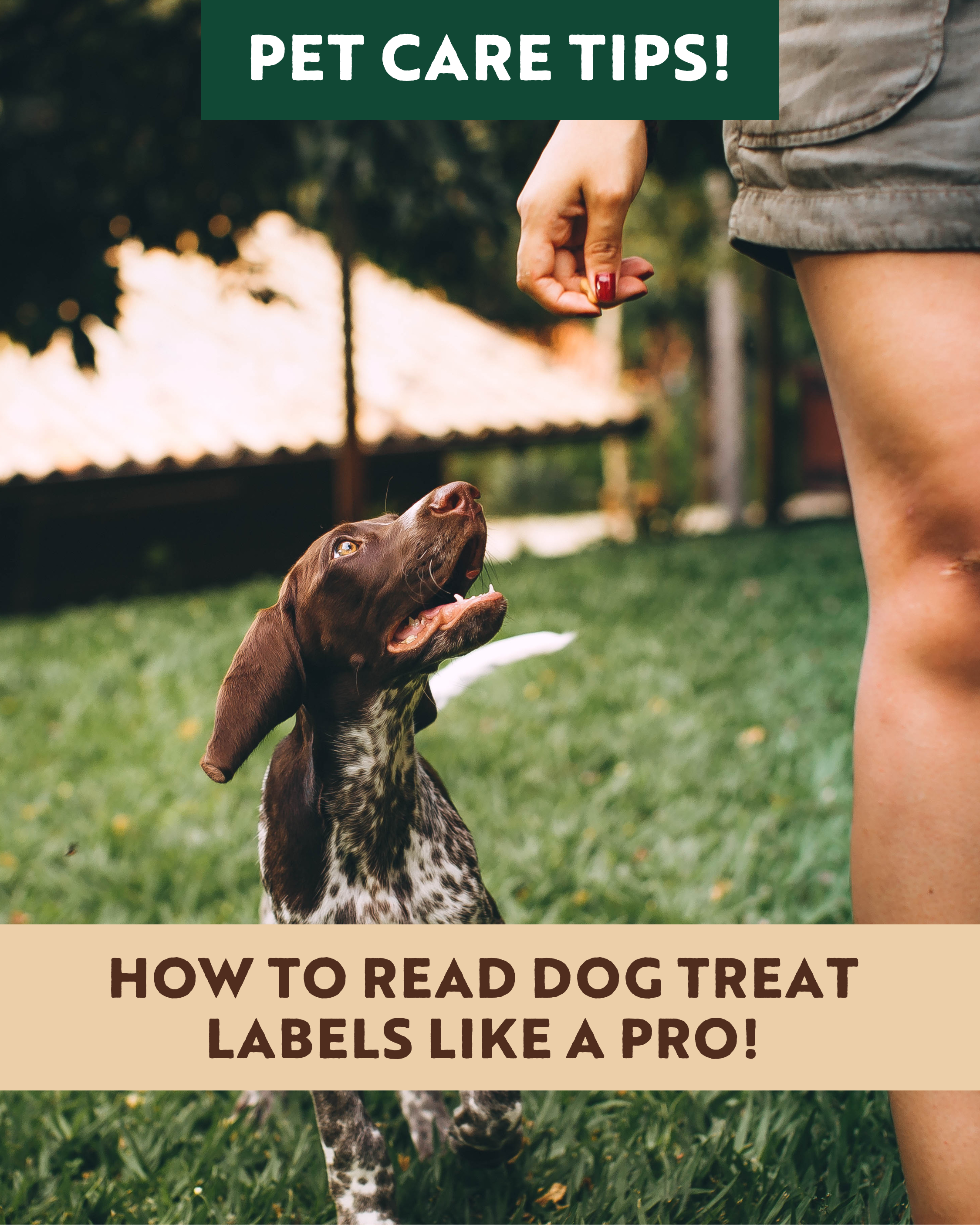As a pet parent, you want the best for your dog—including the treats you give them. But with shelves full of options and labels packed with unfamiliar terms, choosing the right treats can feel overwhelming. Learning how to read dog treat labels empowers you to make informed decisions that support your dog’s health and well-being.
So how do you know for certain you’re feeding your dog with clean & nutritious treats? We’ve got you covered! With a little guidance (and maybe a magnifying glass), you can become a label-reading pro and choose treats your pup will love—and you’ll feel good about too!
Why Read Dog Treat Labels?
Let’s begin with understanding why it is important to always read the nutrition labels on your dog’s treats.
-
Your pup is getting safe, healthy ingredients
-
You’re avoiding allergens or fillers
-
You're taking ownership as a dog owner and ensuring you’re making the best choices for your dog's health and well-being.
Where to Start with the Ingredients List?
The ingredient list is one of the most important parts of any pet food label. Ingredients are listed in order by weight, so the first few items will give you a good idea of the treat’s primary components.
What to look for:
-
Named animal proteins: Ingredients like chicken, beef, turkey, salmon or lakefish are high-quality sources of protein.
-
Whole food ingredients: Items like oats, pumpkin, blueberries, or sweet potato add nutritional value and are easy to digest.
-
Natural preservatives: Apple Cider Vinegar, Rosemary extract, Tocopherols (Vitamin E) or ascorbic acid (Vitamin C) are commonly used natural preservatives.
What to avoid:
-
Vague meat sources: Terms like meat by-products, animal digest, or meat meal without a specified source can indicate lower-quality ingredients.
-
Artificial additives: Ingredients such as BHA, BHT, and ethoxyquin are synthetic preservatives that some pet owners prefer to avoid.
-
Excess fillers: Treats heavy in corn, soy, or wheat may not offer much nutritional value and can sometimes cause sensitivities in some dogs.
Keep It Simple: Why Fewer Ingredients Are Better
When it comes to dog treats, less is often more. A long list of ingredients can be a red flag, especially if it includes unfamiliar or hard-to-pronounce additives.
Here’s why simpler is better:
-
Easier to identify allergens or sensitivities: If your dog has food allergies or a sensitive stomach, short ingredient lists make it easier to pinpoint what might be causing a reaction.
-
Lower chance of unnecessary additives: Long ingredient lists often include artificial preservatives, colorings, or flavorings that don’t add nutritional value.
-
Better transparency: Brands that use just a handful of whole food ingredients are usually more upfront about quality and sourcing.
Look for treats with 5–10 recognizable ingredients, ideally things you’d be comfortable eating yourself.
Look for the Source of Ingredients and Manufacturing Location
Knowing where the ingredients come from—and where the treat was made—can be just as important as what’s in it.
Why it matters: Different countries have different standards when it comes to ingredient quality, food safety, and manufacturing practices. Treats made in countries with strict regulations (like Canada) are generally considered safer and more reliable.
What to look for:
-
Clear labeling such as “Made in Canada with globally sourced ingredients” or “Product of Canada.”
-
Responsibly sourced ingredients from regions known for high safety and quality standards.
-
Brand transparency—reputable companies will often provide additional sourcing info on their websites or packaging.
Red flags:
-
Vague terms like “manufactured for” without stating where it was made.
-
No mention of sourcing at all, which could indicate lower transparency.
Treats with Purpose
By taking a few minutes to read and understand the label, you can make better choices that align with your dog’s dietary needs and your own standards for quality. Focus on transparency, whole ingredients, and nutritional value.
A well-chosen treat is more than just a reward—it’s part of your dog’s overall health journey. And now, you’re equipped to choose with confidence.


